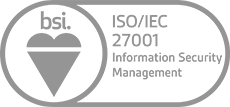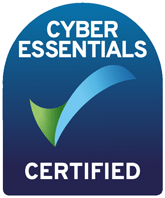Using our documents
Circle Cloud publishes documents in a range of formats, including pdf, pptx, csv, xlsx and docx.
We want as many people as possible to be able to use those documents. For example, when we produce a document we make sure to:
- provide an HTML option where possible
- tag headings and other parts of the document properly, so screen readers can understand the page structure
- make sure we include alt text alongside non-decorative images, so people who cannot see them understand what they’re there for
- avoid using tables, except when we’re presenting data
- write in plain English
How accessible our documents are
However, we know that some of our older documents (published before 23 September 2018) are not accessible. For example, some of them:
- are just photocopies and are not marked up in a way that allows screen reader users to understand them
- are not tagged up properly - for example, they do not contain proper headings
- are not written in plain English
Such documents are exempt from the regulations, so we do not currently have any plans to make them accessible.
But if you need to access information in one of these document types, you can contact us and ask for an alternative format.
What to do if you cannot use one of our documents
If you need a document we’ve published in a different format:
- email [email protected]
- call 0191 672 7012
We’ll consider the request and get back to you within 1 day.
Reporting accessibility problems with one of our documents
We’re always looking to improve the accessibility of our documents. If you find any problems not listed on this page or you think we’re not meeting accessibility requirements, contact Michael Povey ([email protected]).
Enforcement procedure
The Equality and Human Rights Commission (EHRC) is responsible for enforcing the Public Sector Bodies (Websites and Mobile Applications) (No. 2) Accessibility Regulations 2018 (the ‘accessibility regulations’). If you’re not happy with how we respond to your complaint, contact the Equality Advisory and Support Service (EASS).
Technical information about the accessibility of our documents
Circle Cloud is committed to making our documents accessible, in accordance with the Public Sector Bodies (Websites and Mobile Applications) (No. 2) Accessibility Regulations 2018.
The documents Circle Cloud publish are not compliant with the Web Content Accessibility Guidelines version 2.1 AA standard. The non-accessible sections are listed below.
Non accessible content
[Note: if your documents are fully compliant with the WCAG 2.1 AA standard, you can leave the ‘Non accessible content’ section out.
Otherwise, do not change the ’Non accessible content’ heading or the ‘The content listed below is non-accessible for the following reasons’ sentence - they’re legally required.
Do not change the ‘Non compliance with the accessibility regulations’, ‘Disproportionate burden’ and ‘Content that’s not within the scope of the accessibility regulations’ subheadings: they’re also legally required.]
The content listed below is non-accessible for the following reasons.
Non compliance with the accessibility regulations
[Note: In this subsection, list:
- accessibility problems
- which of the WCAG 2.1 AA success criteria the problem fails on
- when you plan to fix the problem
Do not include any problems where you’re claiming disproportionate burden, or where the problem is outside the scope of the regulations (those should go in the subsections below).]
A few of our documents have diagrams. These images do not have a text alternative, so the information in them is not available to people using a screen reader. This does not meet WCAG 2.1 success criterion 1.1.1 (non-text content).
We plan to add text alternatives for all diagrams by September 2020. When we publish new documents we’ll make sure our use of diagrams meets accessibility standards.
Disproportionate burden
[Note: in this subsection list:
- accessibility problems you’re claiming would be a disproportionate burden to fix
- which of the WCAG 2.1 AA success criteria the problem fails on
Bear in mind that something which is a disproportionate burden now will not necessarily be a disproportionate burden forever. If the circumstances change, your ability to claim disproportionate burden may change too.
If you’re not claiming disproportionate burden for anything, leave this subsection out.]
Content that’s not within the scope of the accessibility regulations
[Note: in this subsection list:
- any accessibility problems that fall outside the scope of the accessibility regulations
- which of the WCAG 2.1 AA success criteria the problem fails on
If there are not any problems outside the scope of the accessibility regulations, leave this subsection out.]
Many of our older PDFs and Word documents do not meet accessibility standards - for example, they may not be structured so they’re accessible to a screen reader. This does not meet WCAG 2.1 success criterion 4.1.2 (name, role value).
Some of our PDFs and Word documents are essential to providing our services. For example, we have PDFs with information on how users can access our services, and forms published as Word documents. By September 2020, we plan to either fix these or replace them with accessible HTML pages.
The accessibility regulations do not require us to fix PDFs or other documents published before 23 September 2018 if they’re not essential to providing our services. For example, we do not plan to fix [example of non-essential document].
Any new PDFs or Word documents we publish will meet accessibility standards.
How we tested our documents
We last tested a sample of our documents on [date]. The test was carried out by [add name of organisation that carried out the test, or indicate that you did your own testing.]
We tested:
- x type of document
- y type of document
- z type of document
[Note: provide a brief explanation of how you decided which documents to test. For example, you might have decided to test a representative sample of all your documents, plus a higher proportion of documents that relate directly to the services you provide. And an even higher proportion of documents that relate directly to services aimed at disabled people.]
What we’re doing to improve accessibility
[Note: provide a brief explanation of what you’re doing to improve accessibility. For example, if you’ve carried out a ‘disproportionate burden’ assessment and decided that making some of your older documents accessible right away would be a disproportionate burden for the organisation, talk about your plans to make them accessible in future.]
[Note: do not change the wording about when the page was prepared.]
This page was prepared on [date when it was first published]. It was last updated on [date when it was last updated].













